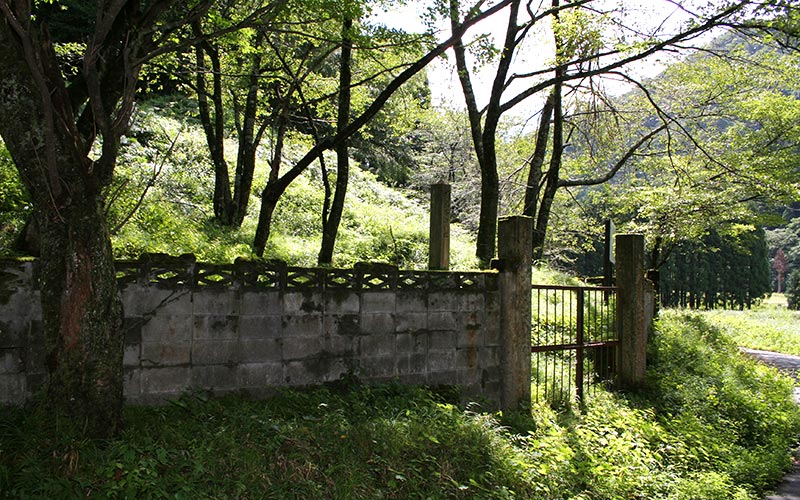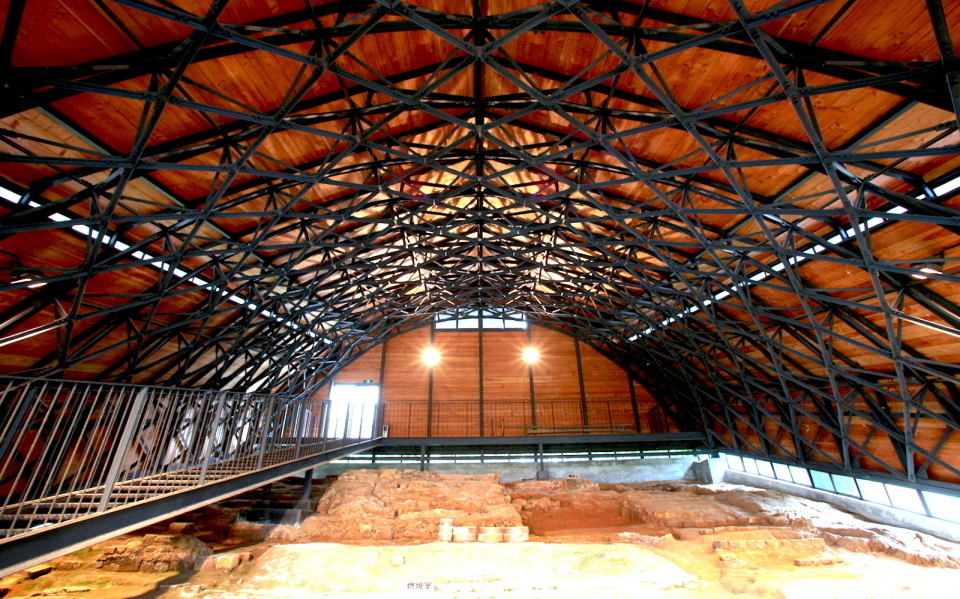��`���̋�J�ėq�� �l���̊� �吳�R�N�n�� �R�㉷��̍H�[�Ő����̔�
��J�ėq�� ��J������
��`���̋�J�ėq�� �l���̊� �吳�R�N�n�� �R�㉷��̍H�[�Ő����̔�
English
�����ɑ�
��J������ �X�g�[���[�Y
KUTANI-BITOEN STORIES
��
���{��
English
�����ɑ�
1. ��J�Ăɂ���
�@��J�ẮA���{�̒��]�ˎ���A����ˁi����\��S���ƌĂ���{�ň�ԑ傫�ȑ喼�j�O��ˎ�O�c����̎��j�����i����S����蕪�˂��ꂽ�吹���˔ˎ�j���A1655�N�i365�N�O�j �u�Ë�J�v�͂����R�ォ��Q�O�L���قǗ��ꂽ��J���ɑS���R�S���̗q��z�����A���n�߂����̂ł��B
�@���Ƃ��ƁA����S���̑O�c�Ƃ͒����̌i�������̐F�G�܍ʁu����ԊG�v����F�X���߂Ă��ĐF�G����ɊS������܂����B���̏�吹���ˎ嗘���̕v�l�͍���瓇�ˎ�̑����ɓ�����O�c�Ƃւ̐i���Ƃ��ėL�c�Ă��x�X�����A�F�G����̐�i�n�̔�O�i�L�c�A�瓇�Ɓj�Ƃ͂����ւ�e���ȊW�ɂ���܂����B
�@���Ƃ��ƁA����S���̑O�c�Ƃ͒����̌i�������̐F�G�܍ʁu����ԊG�v����F�X���߂Ă��ĐF�G����ɊS������܂����B���̏�吹���ˎ嗘���̕v�l�͍���瓇�ˎ�̑����ɓ�����O�c�Ƃւ̐i���Ƃ��ėL�c�Ă��x�X�����A�F�G����̐�i�n�̔�O�i�L�c�A�瓇�Ɓj�Ƃ͂����ւ�e���ȊW�ɂ���܂����B

�@�˂̋��R�������J���ŁA�������邱�Ƃ����荟���ɔ�O�̗l����`����q���z����܂����B ���̗q�ō��ꂽ��J�Ă͐F�G�i�ԁA�A���A�A���̌܍ʂŕ`�������́j�Ɛ�i�ԈȊO��3�F�A4�F�ŕ`���j�̉�@������܂����B�`���ӏ��͐F�X�ł����A�O�c�˂炵���d���ؗ�ȊG�t������Ă��܂��B�����Ŗ�T�O�N�Ԏ��킪�Ă���A���̌�f�₵�܂����B1655�N�Ɏn�܂��T�O�N���1705�N���ɔp��Ƃ̓`���́A�Ȋw�I����Ƃ̈�v�������܂��B(���̎����ɍ��ꂽ�ƍl������ĕ��́A�u�Ë�J�v�Ə̂���܂��B)
�@1806�N ����˂������O����w�����铩����́A�R�U�`�R�V�����ɒB�����̂Ŕˋ��̗��o��h�����߁A���s�̖��H �ؖؕĂ������t���R�q���J���܂������ؕĂ͂Q�N�]�ŋA�����܂����B
�@1811�N �����̎ᐙ�q�ł͐��t�������ɖ��������R�Ă��A������̐B�Y�v��ɐ������܂����B ����q�A���R�q�����A�ԊG�Ȃǂ�`���܂������A�Ë�J���Ȃ��͓̂��ɈӐ}����܂���ł����B
�@1824�N �ċ���J�Ƃ����̂͑吹���˂̒��N��̋g�c���i�L�c�`�q��j�͂V�Q�̎��A���Ȃ�ʋ�J�Ă��ċ����邽�߂ɋ���𓊂��R���̋�J�×q�ɗאڂ��ėq���Č����܂����B��������J���ł͕s�ւȂ��ߖ�1�N��� �����R��ɗq���ڂ��܂����B�Ë�J�̍ċ�������Ďn�߂��g�c���q�͐�Ë�J�̎�@���p���Ȃ���Ǝ��̌y���ȓ������̂���앗�����A�ċ���J�̒��ł��ł��]���̍������̂Ƃ���܂��B
�@1832�N �g�c���q���p�����{�{���́A�G�t�̔ѓc�����Y�E�q��ɂ��A�ԊG�ו`���������܂����B�l�X�ȕϓ]�͂���܂������A���̋g�c����������q�͏��a�܂Ŏg��ꑱ�����݂͢�q�ՓW���٣�Ƃ��ėl�X�ȍ�i�Ƌ��ɊF�l�ɂ��������Ă���܂��B �捠��J���́u��J�×q�Ձv�ƍ����R��́u�q�ՓW���فv�́g���w��̎j�Ձh�Ɏw�肳��܂����B
�@1806�N ����˂������O����w�����铩����́A�R�U�`�R�V�����ɒB�����̂Ŕˋ��̗��o��h�����߁A���s�̖��H �ؖؕĂ������t���R�q���J���܂������ؕĂ͂Q�N�]�ŋA�����܂����B
�@1811�N �����̎ᐙ�q�ł͐��t�������ɖ��������R�Ă��A������̐B�Y�v��ɐ������܂����B ����q�A���R�q�����A�ԊG�Ȃǂ�`���܂������A�Ë�J���Ȃ��͓̂��ɈӐ}����܂���ł����B
�@1824�N �ċ���J�Ƃ����̂͑吹���˂̒��N��̋g�c���i�L�c�`�q��j�͂V�Q�̎��A���Ȃ�ʋ�J�Ă��ċ����邽�߂ɋ���𓊂��R���̋�J�×q�ɗאڂ��ėq���Č����܂����B��������J���ł͕s�ւȂ��ߖ�1�N��� �����R��ɗq���ڂ��܂����B�Ë�J�̍ċ�������Ďn�߂��g�c���q�͐�Ë�J�̎�@���p���Ȃ���Ǝ��̌y���ȓ������̂���앗�����A�ċ���J�̒��ł��ł��]���̍������̂Ƃ���܂��B
�@1832�N �g�c���q���p�����{�{���́A�G�t�̔ѓc�����Y�E�q��ɂ��A�ԊG�ו`���������܂����B�l�X�ȕϓ]�͂���܂������A���̋g�c����������q�͏��a�܂Ŏg��ꑱ�����݂͢�q�ՓW���٣�Ƃ��ėl�X�ȍ�i�Ƌ��ɊF�l�ɂ��������Ă���܂��B �捠��J���́u��J�×q�Ձv�ƍ����R��́u�q�ՓW���فv�́g���w��̎j�Ձh�Ɏw�肳��܂����B

��J�×q��

��J�ėq�ՓW����
�@1841�N ���n�ȊO�̏��q�̑�\�Ƃ��Ă̎��䒬�̋�J���O�́A�m�G�̋��p���č��ȍʐF���E��ݏo���Ĉꐢ���r���A���ł���J�Ă̑�\�I�ȃC���[�W�ɂȂ��Ă��܂��B
�@1915�N �k��H�D�R�l�͎R��̐{�c�ʼnؗq�Ő��t��ԊG�����݁A�ĕ��ɋ�����������A���̌�A���q�ɗq��z����R�̋�J�̊�����܂����B �O�z�⍂�����ł̘D�R�l�̊�W�̍Â��̐܂Ɏ����̍H�[�ł́A�D�R�l�ʂ����˗�����A�����ł��F�X�ʂ���n���Ă���܂��B
�@1936�N ���|�ƁE�x�{�����g��������s�̖k�o�����Y���̏��ɗ����A�F�G����ɗD�ꂽ�Ɛт��c����A���̃��_���ȏ���̐V�N���͌���̍�Ƃɉe����^���Ă��܂��B ���݂܂� ���̎R��ߕӂł͌Ë�J�A�g�c����̗�����p�����Ȃ���A����ɐV��������I�ȋ�J�Ă�n���Ă���H�[��D�ꂽ�l��Ƃ������y�n���ł��B
�@1915�N �k��H�D�R�l�͎R��̐{�c�ʼnؗq�Ő��t��ԊG�����݁A�ĕ��ɋ�����������A���̌�A���q�ɗq��z����R�̋�J�̊�����܂����B �O�z�⍂�����ł̘D�R�l�̊�W�̍Â��̐܂Ɏ����̍H�[�ł́A�D�R�l�ʂ����˗�����A�����ł��F�X�ʂ���n���Ă���܂��B
�@1936�N ���|�ƁE�x�{�����g��������s�̖k�o�����Y���̏��ɗ����A�F�G����ɗD�ꂽ�Ɛт��c����A���̃��_���ȏ���̐V�N���͌���̍�Ƃɉe����^���Ă��܂��B ���݂܂� ���̎R��ߕӂł͌Ë�J�A�g�c����̗�����p�����Ȃ���A����ɐV��������I�ȋ�J�Ă�n���Ă���H�[��D�ꂽ�l��Ƃ������y�n���ł��B
1. Kutani Ware
Kutani ware was produced in 1655 in the Edo era in Japan by Toshiharu Maeda Toshitsune's (a feudal lord of the Daishoji clan) second son, Toshiharu Maeda, who was the third-generation feudal lord of the Kaga clan, ordered to make the "Old Kutani" kiln, which was 34 meters in length. This kiln was built in Kutani village, about 20 km away from Yamashiro.
Originally, the Maeda family of Kaga Hyakumangoku (Hyakuman means million. Goku is the old unit to count the amount of rice.
Originally, the Maeda family of Kaga Hyakumangoku (Hyakuman means million. Goku is the old unit to count the amount of rice.

Hyakumangoku means an area that produces a lot of rice) was interested in polychrome(�F�G) porcelain, such as the five-color "Banreki Akae" made in Jingdezhen, China. Moreover, the wife of the Daishoji feudal lord Toshiharu was the granddaughter of the Nabeshima, feudal lord of Saga Prefecture, and she was often presented with Arita-yaki porcelain as a gift for the Maeda family.
She discovered that pottery stones could be obtained in Kutani village, where the clan's gold mine is located, and a kiln was built to create a hizen type porcelain.
The Kutani ware made in this kiln was painted in two different styles, iro-e (painted in five colors: red, blue, yellow, green and purple) and ao-te (painted in three or four colors other than red). The shapes and designs varied, but the porcelain was painted in a stately and gorgeous manner typical of the Maeda clan. Kutani ware was made here for 50 years and then suddenly discontinued.
Kutani ware started in 1655 and ended about 50 years later in 1705, (Kutani ware thought to have been made during this period is referred to as Ko Kutani, which means "Old Kutani".)
In 1806, Kaga clan purchased 360,000 to 370,000 pieces of ceramics and porcelain from Kyoto and Hizen, and in order to prevent the outflow of clan funds, they invited the famous Kyoto craftsman Aoki Mokubei to open Kasugayama Kiln, but Mokubei returned to the capital after a little more than two years.
In 1811, the clan produced many Imari-style porcelain at the Wakasugi kiln in Komatsu, and succeeded to multiply the production of porcelain. The Ono and Tamiyama kilns also painted red paintings, but they did not intend to produce old Kutani-style ceramics.
In 1824, when Yoshidaya (Denemon Toyoda) was 72 years old, Kutani rebuilt a kiln adjacent to the old Kutani kiln in the mountains, investing huge amount of money in order to revive Kutani ware. However, he moved his kiln to Yamashiro after about a year due to the inconvenience of being in Kutani village. The Yoshidagama kiln, which was started in hopes of reviving the old Kutani, inherited the technique of the Ao-te used in old Kutani kiln and produced unique work which is considered to be the most highly regarded among the revived Kutani kilns.
In 1832, Pottery Miyamoto, who took over the Yoshida-ya kiln, completed the Akae Saibyo technique by Iidaya Hachiroemon, the painter. Despite various changes, the kiln built by Yoshidaya has been used until the Showa era (1926-1989) and is currently displayed in the kiln site as "Kiln Ruins Exhibition Hall" for visitors to view the various works. Recently, the "Kutani ancient kiln site" in Kutani village and the "kiln site exhibition hall" here in Yamashiro were designated as one of the national historic sites.
She discovered that pottery stones could be obtained in Kutani village, where the clan's gold mine is located, and a kiln was built to create a hizen type porcelain.
The Kutani ware made in this kiln was painted in two different styles, iro-e (painted in five colors: red, blue, yellow, green and purple) and ao-te (painted in three or four colors other than red). The shapes and designs varied, but the porcelain was painted in a stately and gorgeous manner typical of the Maeda clan. Kutani ware was made here for 50 years and then suddenly discontinued.
Kutani ware started in 1655 and ended about 50 years later in 1705, (Kutani ware thought to have been made during this period is referred to as Ko Kutani, which means "Old Kutani".)
In 1806, Kaga clan purchased 360,000 to 370,000 pieces of ceramics and porcelain from Kyoto and Hizen, and in order to prevent the outflow of clan funds, they invited the famous Kyoto craftsman Aoki Mokubei to open Kasugayama Kiln, but Mokubei returned to the capital after a little more than two years.
In 1811, the clan produced many Imari-style porcelain at the Wakasugi kiln in Komatsu, and succeeded to multiply the production of porcelain. The Ono and Tamiyama kilns also painted red paintings, but they did not intend to produce old Kutani-style ceramics.
In 1824, when Yoshidaya (Denemon Toyoda) was 72 years old, Kutani rebuilt a kiln adjacent to the old Kutani kiln in the mountains, investing huge amount of money in order to revive Kutani ware. However, he moved his kiln to Yamashiro after about a year due to the inconvenience of being in Kutani village. The Yoshidagama kiln, which was started in hopes of reviving the old Kutani, inherited the technique of the Ao-te used in old Kutani kiln and produced unique work which is considered to be the most highly regarded among the revived Kutani kilns.
In 1832, Pottery Miyamoto, who took over the Yoshida-ya kiln, completed the Akae Saibyo technique by Iidaya Hachiroemon, the painter. Despite various changes, the kiln built by Yoshidaya has been used until the Showa era (1926-1989) and is currently displayed in the kiln site as "Kiln Ruins Exhibition Hall" for visitors to view the various works. Recently, the "Kutani ancient kiln site" in Kutani village and the "kiln site exhibition hall" here in Yamashiro were designated as one of the national historic sites.


In 1841, Kutani Shozo of Terai, who represented other kilns in the region, created a world of gorgeous gold brocade using western paints. This is still the representative image of Kutani ware today.
In 1915, Kitaoji Rosanjin experimented with sometsuke and aka-e at the Pottery Suda-Seika in Yamashiro, and became interested in Kutani ware. When Rosanji's pottery exhibitions were held at Mitsukoshi or Takashimaya Department Store, Kutani Bitouen was asked to make copies of Rosanji's pottery, which we still make today.
In 1936, a potter, Kenkichi Tomimoto visited Tojiro Kitade's studio in Kaga City, where he made excellent achievements in the field of colored komon (small woodblock prints), and the freshness of the modern komon has influenced contemporary artists. Up to the present day, the Yamashiro area has been home to many ateliers and outstanding individual artists who have created newer, more modern Kutani ware while continuing the old Kutani and Yoshida-ya styles.
In 1915, Kitaoji Rosanjin experimented with sometsuke and aka-e at the Pottery Suda-Seika in Yamashiro, and became interested in Kutani ware. When Rosanji's pottery exhibitions were held at Mitsukoshi or Takashimaya Department Store, Kutani Bitouen was asked to make copies of Rosanji's pottery, which we still make today.
In 1936, a potter, Kenkichi Tomimoto visited Tojiro Kitade's studio in Kaga City, where he made excellent achievements in the field of colored komon (small woodblock prints), and the freshness of the modern komon has influenced contemporary artists. Up to the present day, the Yamashiro area has been home to many ateliers and outstanding individual artists who have created newer, more modern Kutani ware while continuing the old Kutani and Yoshida-ya styles.
1. 萉���J��
��J�������{�]戶���㒆���C����ˁi���i����S�ݐC���c�����{�ő�I����j��O��ˎ�O�c����V���j����(�n����S�ݐΕ��o�I�吹���˔ˎ�)��
����1655�N�i365�N�O�j���R���20�����I��J������������S��34 m�I�qࢁC揭�J�u�Ë�J�v��產�I�����B�{�҉���S�ݐΓI�O�c�ƏA��㔝��W�������i���������I�ܐF�u��曆��㉁v(��曆�܍�)������I��C������I��k������B���O�C�吹���ˎ嗘���I�v�l������瓇�ˎ�I�����C�S�흾�������O�c�ƍ�ב��X�I�L�c������C���o����I�틻���I��O�i�L�c�A�瓇�Ɓj�L�����ؓI萌W�B
����1655�N�i365�N�O�j���R���20�����I��J������������S��34 m�I�qࢁC揭�J�u�Ë�J�v��產�I�����B�{�҉���S�ݐΓI�O�c�ƏA��㔝��W�������i���������I�ܐF�u��曆��㉁v(��曆�܍�)������I��C������I��k������B���O�C�吹���ˎ嗘���I�v�l������瓇�ˎ�I�����C�S�흾�������O�c�ƍ�ב��X�I�L�c������C���o����I�틻���I��O�i�L�c�A�瓇�Ɓj�L�����ؓI萌W�B

�l��ᢌ���內���R���ݓI��J���\�擾���y�C�����ݍ��������A��O�鎮�I�q��B���q����I��J���L�F㉁i�p�g�A���A黃�A���A�������F㉐������j�a��i�p�g�ȊO�I3��4�����F㉐��j�I�`�@�B�L�e��e��I�`狀�a�v�C�A�`���s���O�c�ˈ��n�d���ؗ�B���|��������I���ԑ��L50�N�C��Ғ�產�B���i�n��1655�N�C���ݑ��50�N��1705�N���E�����I說�@�C�o�ț{���ʌ��ʑ������B �i�ݍ���������I�I����i�ׁu �Ë�J�v �j
1806�N ����˜n���s�a��O�w���I���I�퍂�B36~37���C�זh�~�˓I�������o�C����籐������s���� �ؖؕĊJ辦�t���R�q�C�A�ؕč�2�N����A���s�B
1811�N �����I�ᐙ�q��產���������ݗ����i�I���I��C�������n���嗹�I��I產�ʁB����q�A���R�q����L�g�p��㉋Z�@�C�A�����ŎZ��產�Ë�J���i��M�B
1824�N ������J�C���吹���˓I���N��g�c���i沓c�B�q��j��72歲���C�ח�������J���s�ɉԔ���C�ݎR���I��J�×q�ӏd���V�q�����B�A����J���L�����s�ցC��1�N��A���q������R��B�ח������Ë�J���J�n�I�g�c���q�C㋏����Ë�J���g�p�I��Z�@�C��ᢓW�o�Փ��j���ʓ��I�앗�C�ݕ�����J�I��i���Ŋl�����B
1832�N �{�{��㋏����g�c���q�C�R�`�t�ѓc�����Y�E�q�劮����㉍ו`�Z�@�B�ԊǕ������ځC�A�g�c�������I�q��꒼�g�p�����a����C�ڑO�����ȁu�p�q���W�T�فv�I�`���W���e���i�����V���V�ŁB�ŋ߁C�ʉ���J���I�u��J�×q�⚬�v�a�ʉ��R��I�u�p�q���W�T�فv��w��ׁu���Ǝw��Ðցv�B
1806�N ����˜n���s�a��O�w���I���I�퍂�B36~37���C�זh�~�˓I�������o�C����籐������s���� �ؖؕĊJ辦�t���R�q�C�A�ؕč�2�N����A���s�B
1811�N �����I�ᐙ�q��產���������ݗ����i�I���I��C�������n���嗹�I��I產�ʁB����q�A���R�q����L�g�p��㉋Z�@�C�A�����ŎZ��產�Ë�J���i��M�B
1824�N ������J�C���吹���˓I���N��g�c���i沓c�B�q��j��72歲���C�ח�������J���s�ɉԔ���C�ݎR���I��J�×q�ӏd���V�q�����B�A����J���L�����s�ցC��1�N��A���q������R��B�ח������Ë�J���J�n�I�g�c���q�C㋏����Ë�J���g�p�I��Z�@�C��ᢓW�o�Փ��j���ʓ��I�앗�C�ݕ�����J�I��i���Ŋl�����B
1832�N �{�{��㋏����g�c���q�C�R�`�t�ѓc�����Y�E�q�劮����㉍ו`�Z�@�B�ԊǕ������ځC�A�g�c�������I�q��꒼�g�p�����a����C�ڑO�����ȁu�p�q���W�T�فv�I�`���W���e���i�����V���V�ŁB�ŋ߁C�ʉ���J���I�u��J�×q�⚬�v�a�ʉ��R��I�u�p�q���W�T�فv��w��ׁu���Ǝw��Ðցv�B


1841�N ��\�����n���qI���䒬�I��J���O�C�g�p���������n���o�ؗ�I�ʐF���E�莧���r�ꎞ�B����������J���I��\�`�ہB
1915�N �k��H�D�R�l�ݎR��I�{�c�ʼnؗq�����Ԙa��㉁C��������產��������B�V��ҍ݊��q���q�C�n��o������J����M�B每���O�z�a���������s�D�R�l��i�W�V�ہC�s��L�l�ϑ����H�[����D�R�l�I仿���i�C��������㔐���e��仿���i�B
1936�N ���Y�ƕx�{���g�ғ�����s�w���k�o�����Y�C�ݐF㉏���㗯�������o�I���A�C���o����I�V�N���e�����c���Y�p�ƁB���������C�R��n���Ґ������H�쎺�a���o�l�Y�p�ƓI��鄉�C���쉄㔗��Ë�J�a�g�c�����i�C�����n�����X�V�A�X����I��J������B
1915�N �k��H�D�R�l�ݎR��I�{�c�ʼnؗq�����Ԙa��㉁C��������產��������B�V��ҍ݊��q���q�C�n��o������J����M�B每���O�z�a���������s�D�R�l��i�W�V�ہC�s��L�l�ϑ����H�[����D�R�l�I仿���i�C��������㔐���e��仿���i�B
1936�N ���Y�ƕx�{���g�ғ�����s�w���k�o�����Y�C�ݐF㉏���㗯�������o�I���A�C���o����I�V�N���e�����c���Y�p�ƁB���������C�R��n���Ґ������H�쎺�a���o�l�Y�p�ƓI��鄉�C���쉄㔗��Ë�J�a�g�c�����i�C�����n�����X�V�A�X����I��J������B
��
MENU
 �� ��
�� ��
�g�b�v
���m�点
��ЊT�v
>
���₢����
>
�A�N�Z�X
>
���i�Љ�
>
�������̍H�[
>
�I�����C���V���b�v
>
���q�l��
>
�u���O
�I�[�_�[�i
����
�g�b�v
���m�点
��ЏЉ�
�A�N�Z�X
�������̂���
���i�Љ�
�I�[�_�[�i
���q�l�̐�
���戵���X
�u���O
�I�����C���V���b�v
�悭���邲����
��J�Ăɂ���
���ꉷ��̂�������
�c�[���X�g�̊F�l��
�������l
�֘A�����N
���₢����
�T�C�g�}�b�v
����
��
MENU
 �� ��
�� ��
© 2020 KUTANI BITOUEN All Rights Reserved.



